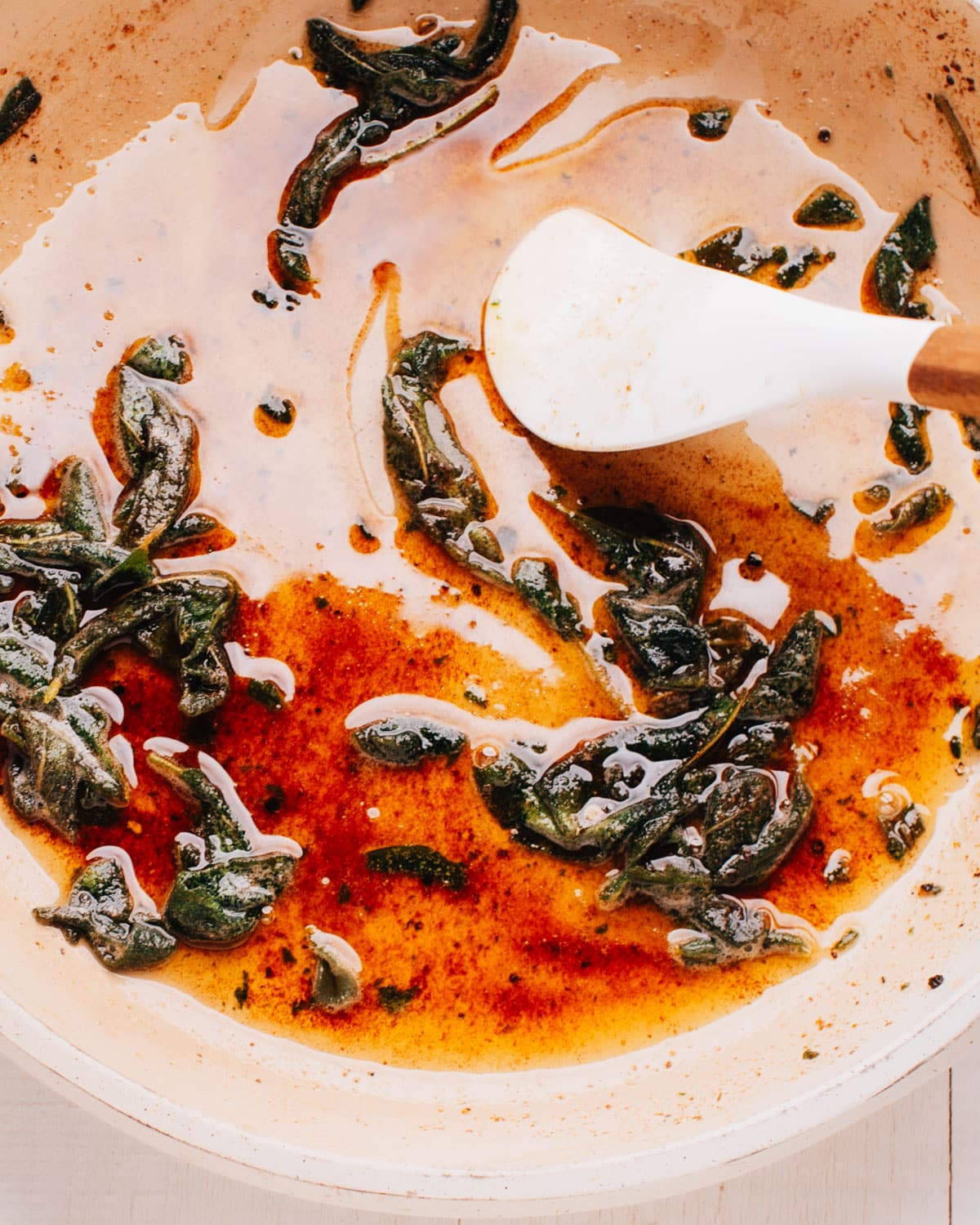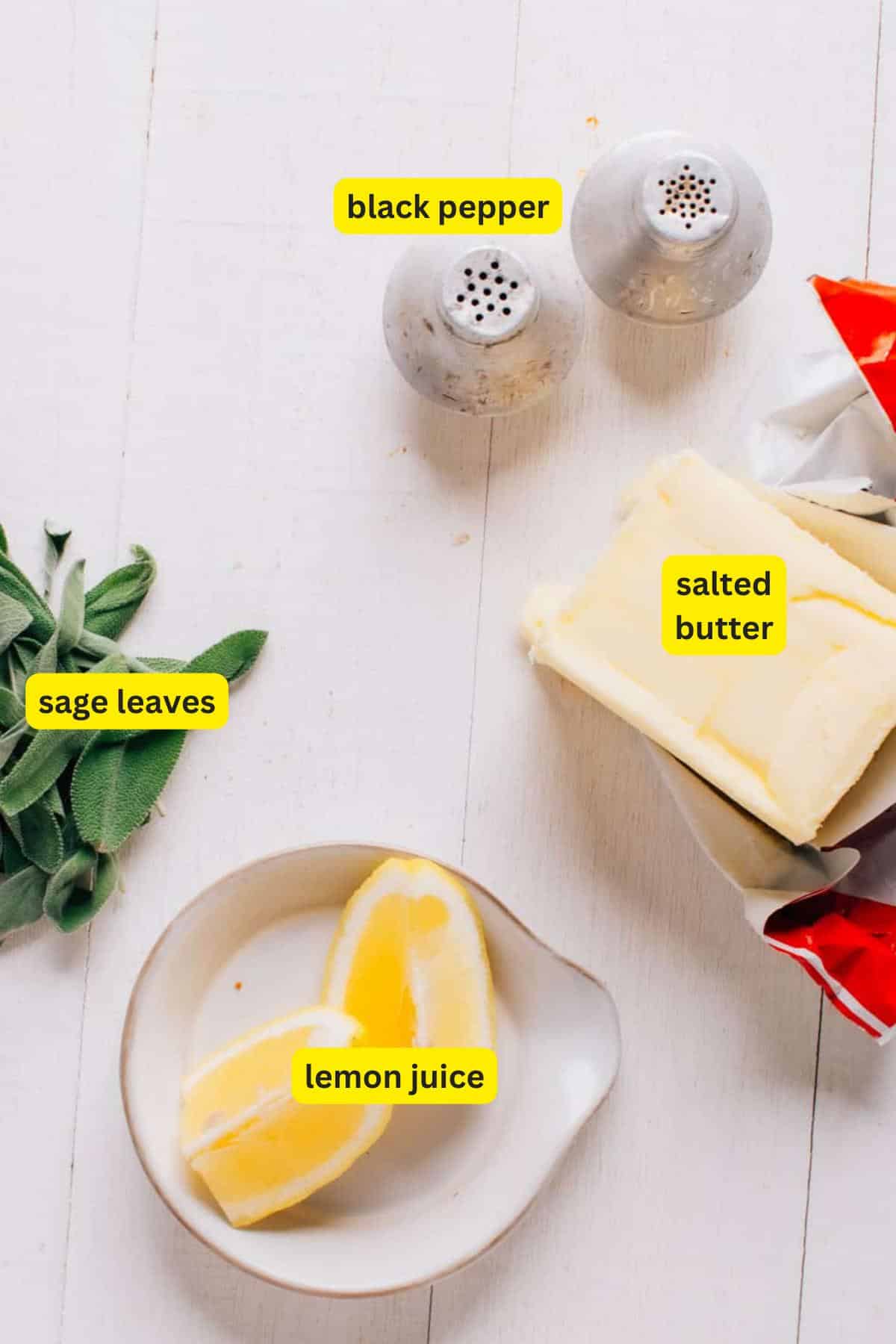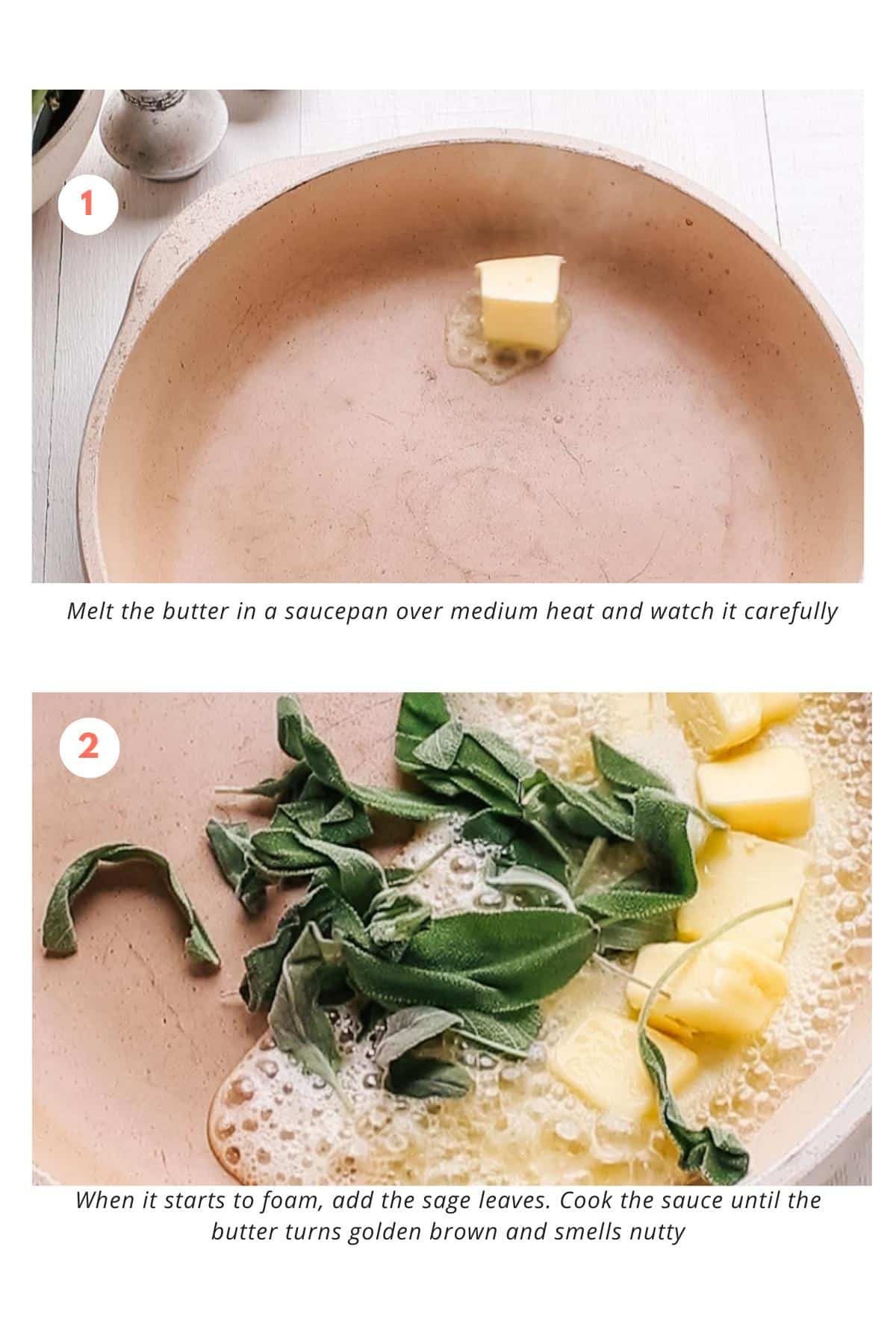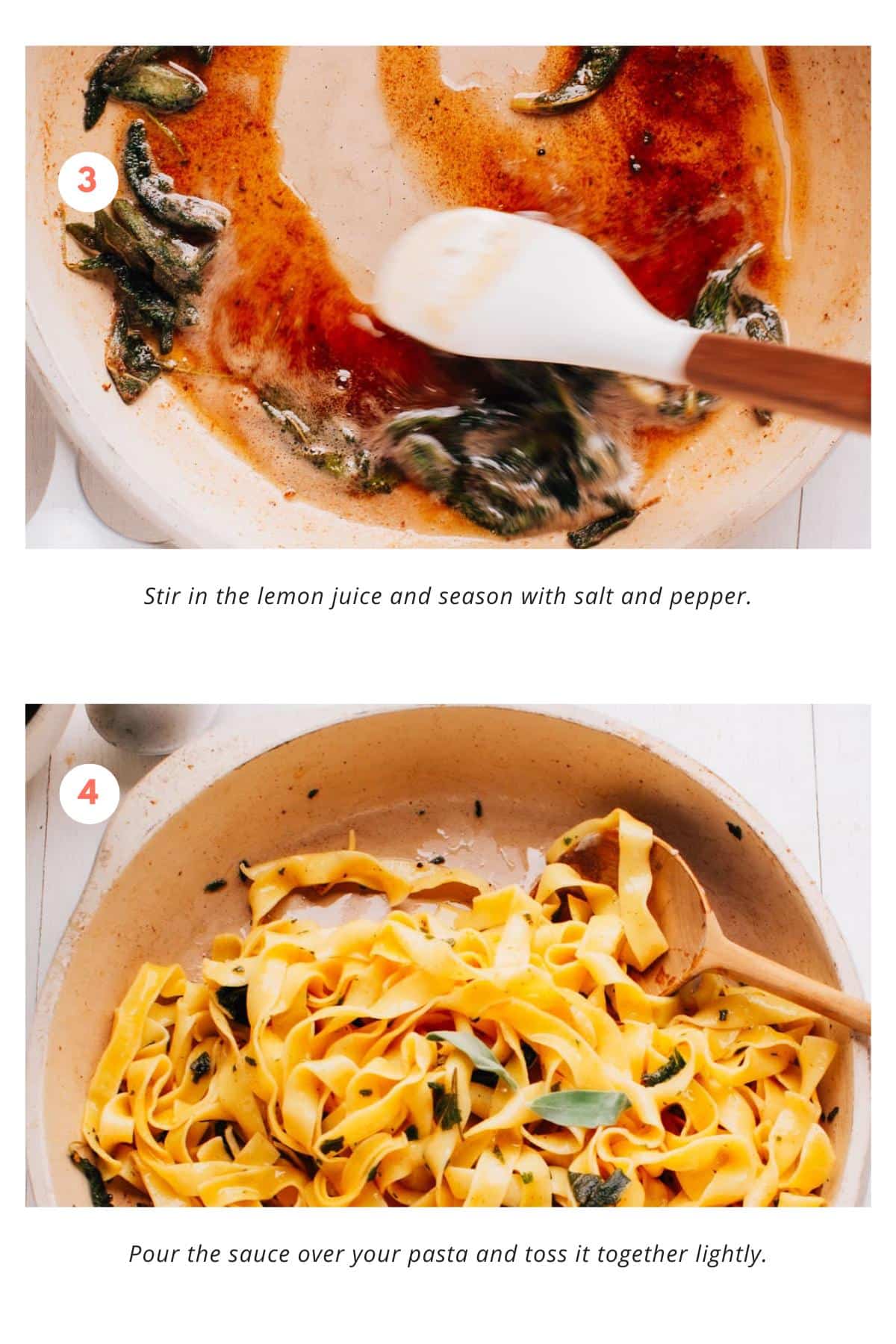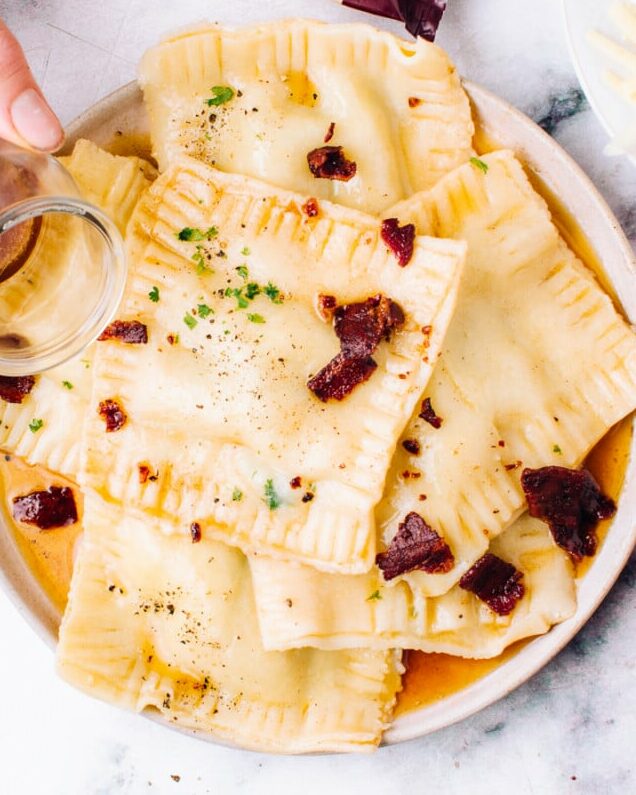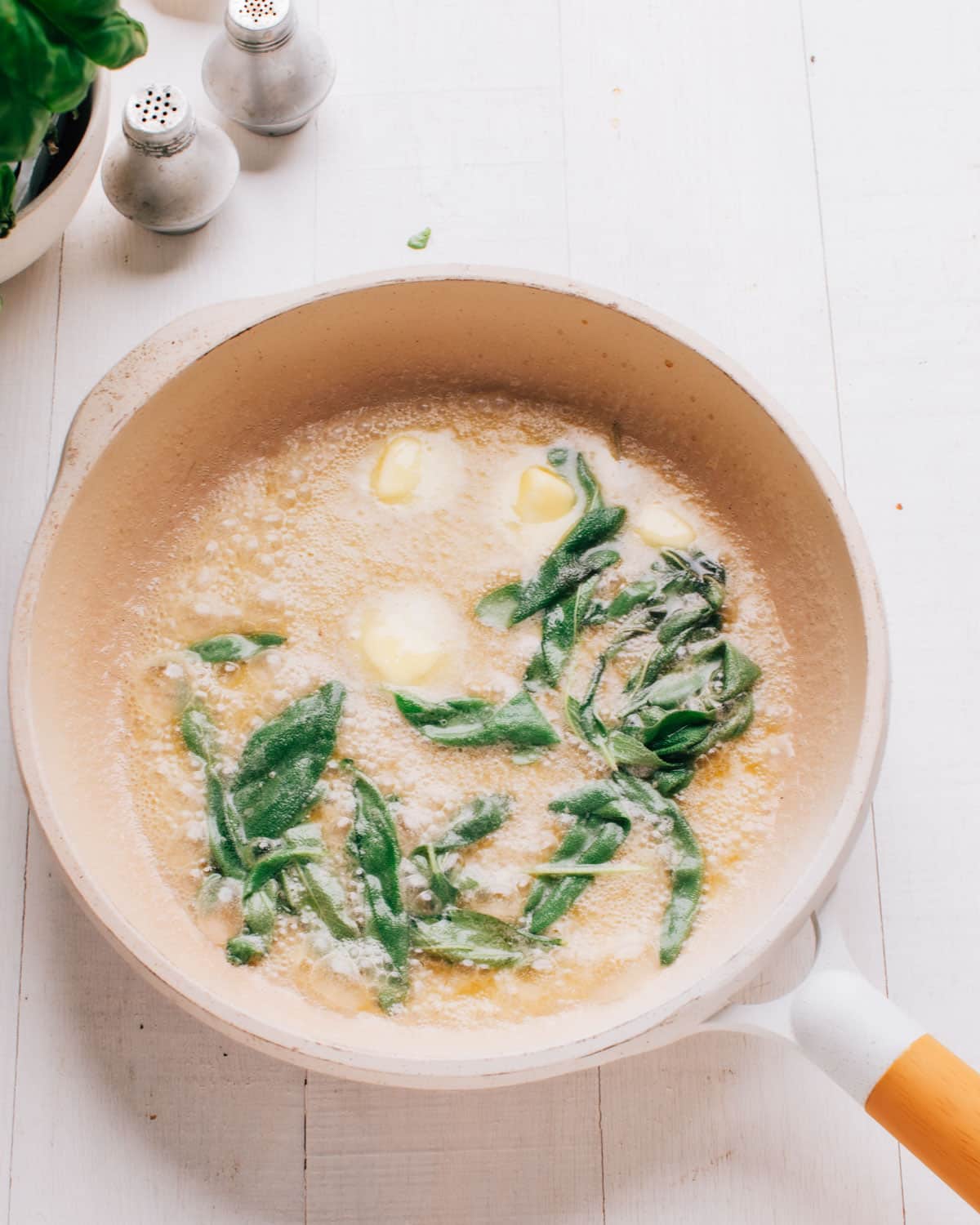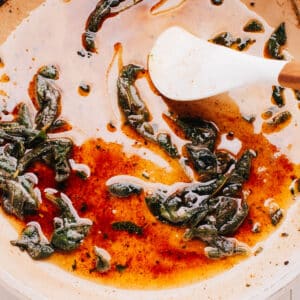Apr 23, 2024, Updated May 06, 2024
Rich and nutty taste: The process of browning the butter gives this sauce a rich, nutty flavor that adds depth and complexity to any dish. Goes with everything: It goes beautifully with pasta, gnocchi, steak, pork, ravioli, potatoes, chicken, fish, root vegetables etc. Mind-Blowingly Simple: This brown butter sage sauce is made with simple ingredients and minimal preparation. It’s basically just butter cooked until it takes on a lovely golden brown color and nutty flavor. It comes together in minutes. Restaurant-quality results at home: This sauce is giving restaurant-quality.
The science behind brown butter is all about the Maillard reaction, which is like caramelization, but with protein instead of sugars:
When you melt butter, it begins to separate into its main components: milk solids and fat. Butter also contains a small amount of water. As the butter continues to heat, the water starts to evaporate, and the milk solids settle at the bottom of the pan.
Here’s what happens next:
Salted butter: Choose a high-quality salted butter for this recipe. It’s the key ingredient, after all. The salt in the butter adds depth of flavor to the sauce. However, if you prefer to control the saltiness, use unsalted butter and adjust the salt to taste later. In this case, add ¼ tsp kosher salt and add more to taste. Fresh sage leaves: For the best flavor, use bright, fresh sage leaves. You can add more or less based on your preference for sage flavor. Lemon juice: Freshly balances the richness of the brown butter and brightens the sauce. Black pepper: For the best flavor, use a pepper grinder to grind the peppercorns freshly. Grated Parmesan cheese: This finishes the sauce and simple dish off beautifully.
Unsalted butter: If you prefer to control the sauce’s salt content, you can use unsalted butter instead of salted butter. I totally get that! You’ll need to adjust the amount of salt to taste during the sauce-making. Herb substitutions: While fresh sage leaves provide a specific flavor direction to the sauce, you can play around with other fresh herbs like thyme, rosemary, or parsley. Its a different sauce experience altogether. Citrus variations: Instead of lemon juice, try other citrus juices like lime or orange to add acidity and brightness to the sauce. Spicy: For some zing, add spices or aromatics such as garlic, shallots, or red pepper flakes. Cheese options: While Parmesan cheese is traditionally used for serving, explore other cheese options such as Pecorino Romano, Grana Padano, or Asiago. Nuts: Try this sauce with toasted chopped nuts for added toasty nuttiness: hazelnuts, almonds, and walnuts are lovely.
Tools to Grab
Set aside these tools to make your brown butter sauce:
Saucepan or Large Skillet Spatula or wooden spoon
1. Brown the Butter with Sage
First, melt the butter in a saucepan over medium heat and watch it carefully. When it starts to foam, add the sage leaves. Cook the sauce until the butter turns golden brown and smells nutty. This will take about 3-5 minutes.
2. Season the Sauce
Take it off the heat and immediately stir in the lemon juice to stop the browning. Season with salt and pepper.
3. Serve and Finish
Pour the sauce over your pasta, fish, or other dish. Optionally, finish it off with some Parmesan cheese.
Advance Prep
You can prepare the brown butter sage sauce in advance and store it for later use. Follow the recipe instructions, allowing the sauce to cool to room temperature before transferring it to an airtight container.
Storing Leftovers
Store leftover sage butter sauce in the refrigerator for 3-4 days. Make sure the container is tightly sealed to prevent any smells from permeating the sauce.
Reheating Tips
When ready to use, gently reheat the sauce in a saucepan over low heat, stirring occasionally until warmed through. Be careful not to overheat or boil the sauce, as this can cause it to separate.
The sauce can be stored in the freezer for up to 2-3 months.
You can otherwise just toss everything together but the sage leaves are fragile once fried and will crumble into the sauce. Delicious, but less dramatic presentation.
What types of pasta are best with Brown Butter Sage Sauce?
For the brown butter sage sauce, you’ll want pasta that really catches and holds onto the sauce. Here are some top picks:
Fettuccine, Tagliatelle or Pappardelle: The wide, flat shape is perfect for clinging onto the rich sauce. Gnocchi: These pillowy dumplings are amazing with brown butter and sage. They soak up the sauce in all the right ways. Perfect over classic potato gnocchi or pumpkin gnocchi! Ravioli: Especially if it’s filled with cheese or pumpkin, ravioli works wonderfully. The sauce complements the filling beautifully. It’s luscious over mushroom-stuffed or butternut squash ravioli Tortellini: This nutty brown butter sauce is perfect over store-bought cheese or chicken tortellini for a delicious weeknight dinner that couldn’t be quicker.
You can also skip the noods and drizzle it over roast turkey, chicken or pretty fall vegetables.
